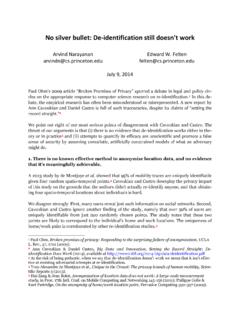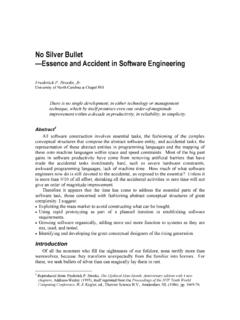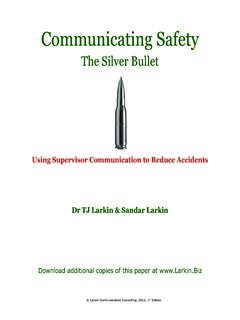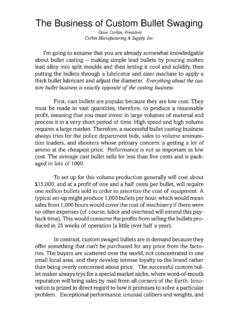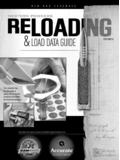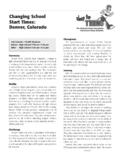Transcription of Umbrellas Don’t Make it Rain: Why Studying and Working ...
1 April 2015. Umbrellas Don't make it rain : Why Studying and Working Hard Isn't Enough for Black Americans Darrick Hamilton William Darity, Jr. Anne E. Price Vishnu Sridharan Rebecca Tippett Duke Center for Social Equity Duke Center for Social Equity About the Authors Darrick Hamilton, , is an Associate Professor of Economics and Urban Policy at Milano- The New School for International Affairs, Management and Urban Policy and the Department of Economics at The New School for Social Research, and a faculty research fellow at the Schwartz Center for Economic Policy Analysis. William A. ( Sandy ) Darity, Jr., , is the Samuel DuBois Cook Professor of Public Policy, African and African American Studies, and Economics and the director of the Duke Consortium on Social Equity at Duke University. He has served as chair of the Department of African and African American Studies and was the founding director of the Research Network on Racial and Ethnic Inequality at Duke.
2 Anne E. Price, , is Managing Director and Chief Asset Officer at the Insight Center for Community Economic Development. She manages the Closing the Racial Wealth Gap Initiative. Vishnu Sridharan, , has worked on international and domestic anti-poverty platforms for the last decade. He is a member of the Experts of Color Network at the Insight Center. Rebecca Tippett, , is the Director of the Carolina Demography at the Carolina Population Center at UNC-Chapel Hill. Design and layout provided by Anne Price and Design Action Collective Editorial support provided by Anat Shenker, ASO Communications About the National Asset Scorecard and Communities of Color The National Asset Scorecard and Communities of Color (NASCC) uses hard metrics to highlight the economic well-being of people of color in the United States. Funded by the Ford Foundation's Building Economic Security Over a Lifetime (BESOL) Initiative, NASCC shows the asset holdings of people of particular national origin groups and breaks down heterogeneous designations such as Latino and Asian into specific subgroups such as Mexican, Puerto Rican, Korean, Indian, etc.
3 NASCC offers a body of previously unknown data on racial and ethnic wealth disparities, while also comparing the economic well-being of specific ethnic and racial groups within the same metropolitan area. In addition, it also disaggregates data from Native American and African American communities on the basis of tribal affiliation and national origin respectively. Umbrellas Don't make it rain : Why Studying and Working Hard Isn't Enough for Black Americans 1. The NASCC project is conducted by Duke University's Research Network on Racial and Ethnic Inequality. The researchers are led by William Darity, Jr, at Duke University and Darrick Hamilton at The New School. The NASCC research team with expertise in survey design, analysis of group differences in asset accumulation and debt burden, and general patterns of ethnic/racial group inequality, was assembled to conduct the investigation and analyze the data generated from the study. The study is intrinsically multidisciplinary; members of the team represent the following fields: statistics, economics, sociology, political science, ethnic studies, and urban planning.
4 About the Insight Center for Community Economic Development The Insight Center for Community Economic Development is a national research, consulting, and legal organization dedicated to building economic health and opportunity in vulnerable communities. The Closing the Racial Wealth Gap Initiative( CRWG) at the Insight Center is a national effort to build awareness and support for efforts to address racial and ethnic wealth inequities based on structural factors. For more information, visit Acknowledgements We wish to express our sincere gratitude to Anat Shenker-Osario of ASO Communications who provided expertise on framing, language and editorial support, and in that line, improved the report significantly. We would also like to acknowledge the generous grant support from the Ford Foundation and our program officers at the Ford Foundation, Kilolo Kijikazi and Amy Brown. All opinions, errors and omissions should be attributed to the authors of this report.
5 Umbrellas Don't make it rain : Why Studying and Working Hard Isn't Enough for Black Americans 2. For People of Color, All the Right Choices Don't Equal All the Right Outcomes America prides itself on a long-standing belief that anyone can make it financially by Working hard and tugging on their proverbial boot-straps. According to a 2014 Pew Research survey, 57. percent of Americans disagree with the statement (s)uccess in life is pretty much determined by forces outside our control. 1 From the pioneers to the financiers, wealthy Americans are acclaimed as self-made men (and on occasion self-made women), succeeding on pure grit, gumption, and ingenuity. But America's egalitarian promise of opportunity and individual agency remains unfulfilled. 3 An analysis of who holds America's wealth makes clear how life outcomes can diverge radically, in particular for those subject to systemic historically rooted discrimination, which is not related to the amount of personal effort exerted.
6 A comprehensive understanding of wealth the value of what you own minus what you owe . demonstrates how vulnerability to economic calamity like the Great Recession can have vastly different consequences. Differences in wealth accumulation are important to examine because wealth whether invested in a debt-free education, small business creation, housing or retirement savings generates opportunity and improves well-being. In addition, wealth provides the freedom to innovate. Starting a business, inventing a new product, making land productive, attending vocational training, and making investments all beget greater wealth but they require liquid wealth to get started. In sum, wealth provides people with initial capital to purchase an appreciating asset, which in turn, iteratively generates more wealth. Accumulated wealth can also be passed on to children, begetting yet more wealth and opportunity in an intergenerational manner. Research and public policy have traditionally focused on education and income as drivers of upward mobility.
7 There is compelling evidence, however, that education alone does little to explain the source of different levels of economic well-being, especially across race. 4 Observing an association between higher levels of educational attainment and higher levels of net wealth and concluding that education produces wealth is tantamount to observing an association between the presence of Umbrellas during rainfalls and concluding that Umbrellas cause the rain . It is more likely that the relative wealth of different races explains the educational attainment differences across race groups. 5. For black families and other families of color, Studying and Working hard is not associated with the same levels of wealth amassed among whites. Black families whose heads graduated from college have about 33 percent less wealth than white families whose heads dropped out of high school. The poorest white families those in the bottom quintile of the income distribution.
8 Have slightly more wealth than black families in the middle quintiles of the income distribution. The average black household would have to save 100 percent of their income for three consecutive years to overcome the obstacles to wealth parity by dint of their own savings activity. 6. It is the unearned birthright of inheritance or other family transfers that has the greatest effect on wealth accumulation, and likewise is the largest factor erecting barriers to wealth accumulation for people of color. White families have had significantly more time to pass Umbrellas Don't make it rain : Why Studying and Working Hard Isn't Enough for Black Americans 3. wealth from generation to generation. These generational transfers include financing their children's college education, giving them down payments for houses, and more generally providing them with inheritance and other gifts to seed asset accumulation. Intergenerational transfers are central sources of wealth building.
9 Black families, however, have never had comparable resources to pass down to succeeding generations. As such, black families whose members study and work hard are still hindered in their efforts to generate the resources necessary for their own security and to ensure the well-being of their children. 7. This report aims to move beyond the empirically unsubstantiated individual effort leads to economic success paradigm, which focuses on purported racial differences with regards to effort in school and work. We illustrate that educational attainment, employment, and income cannot explain the enormous racial differences in wealth, which is the paramount indicator of economic success. Finally, we outline solutions to address the unjust distribution of wealth that is rooted in the source of the economic disparity in the first place. Worsening Disparity in America's Post Recession For many Americans, the Great Recession and its aftermath highlighted that Working hard and playing by the rules is no guarantee of economic success.
10 Today, ordinary middle and Working class families work long hours, often at multiple jobs, in the quest to provide for themselves and their families. But although the recession officially ended years ago, many Americans' lives are still fraught with economic instability and insecurity. Americans took a hit from the speculation fueled crash of the Great Recession. From 2005 to 2009, the typical white family saw 16 percent of their wealth taken. The hit was even more devastating for the typical black family, which had over half (53 percent) of their already relatively low wealth stripped away. Before the Great Recession the typical black family had a little less than a dime for every dollar in wealth of the typical white family. After the recession, the barrier to wealth for the typical black family was made twice as high with them having about a nickel for every dollar in wealth as the typical white family. In the economic recovery period between 2009.
